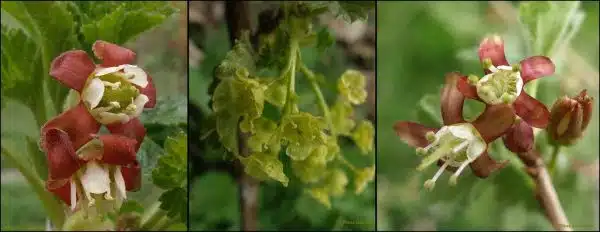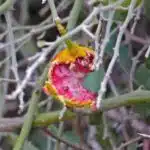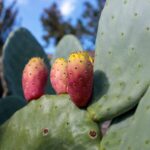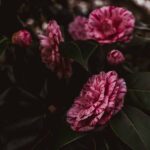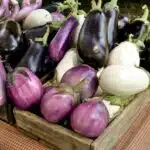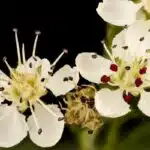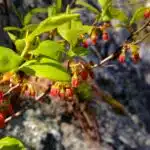Jostaberry bushes are an excellent addition to any garden or landscape, providing both edible fruit and ornamental value. These hybrid plants are a cross between black currants and gooseberries and have gained popularity in recent years for their delicious tart-sweet berries, high nutritional content, and ease of care.
Growing jostaberries does not require extensive horticultural knowledge, but it does require specific attention to soil type, watering, pruning, and pest control. In this article, we will provide a comprehensive guide on how to grow and care for jostaberry bushes so that you can enjoy their bountiful harvest year after year. Whether you are an experienced gardener or a beginner looking to expand your skills, this guide will help you cultivate healthy and productive jostaberry bushes in your own backyard.
Understanding Jostaberry Bushes
Jostaberry bushes are a hybrid cross between black currants and gooseberries. They produce small, juicy berries that have a sweet-tart flavor. There are several varieties of jostaberry bushes, each with their unique qualities. The Josta variety is the most common and produces large, flavorful fruit that is ideal for eating fresh or making jams and jellies.
Caring for jostaberry bushes requires some attention to detail but can be quite simple. These plants prefer full sun but also grow well in partial shade. They need regular watering during the growing season and benefit from mulching around the base of the plant to help retain moisture in the soil. Pruning is essential to promote healthy growth and improve fruit production. It’s important to remove any dead or damaged wood and thin out crowded branches to allow air circulation.
To get the best results from your jostaberry bushes, it’s crucial to choose the right location in your garden. These plants prefer well-drained soil that is rich in organic matter. They thrive in slightly acidic soil with a pH level between 5.5-7.0. Be sure to select an area that gets at least six hours of sunlight daily, as this will help ensure optimal growth and fruit production. With proper care and attention, jostaberry bushes can provide a bountiful harvest for years to come!
Choosing The Right Location For Your Jostaberry Bushes
Now that you understand the basics of jostaberry bushes, it is time to choose the right location for them. One of the most important factors to consider is sun exposure. Jostaberry bushes require at least six hours of direct sunlight per day for optimal growth and fruit production. Therefore, it is essential to select a spot in your garden or orchard that receives enough sunlight.
In addition to sun exposure, soil type is another crucial factor when it comes to growing jostaberries. These plants prefer well-draining soil that is rich in organic matter. Avoid planting them in heavy clay soils or those that are too sandy as they can affect the plant’s growth and fruiting ability negatively. If the soil in your chosen location does not meet these requirements, you can amend it by adding compost or aged manure.
Overall, choosing the right location for your jostaberry bushes is vital if you want to have a successful harvest. Remember to select a spot with plenty of sunshine and well-draining soil rich in organic matter. By taking these factors into consideration, you will be on your way to growing healthy and productive jostaberry bushes in no time! In the next section, we’ll discuss soil preparation for jostaberry bushes so that you can ensure optimal growing conditions for your plants.
Soil Preparation For Jostaberry Bushes
To ensure successful growth of jostaberry bushes, it is essential to have soil pH tested to establish whether it is suitable for the bush’s requirements.
Incorporating organic compost and fertilizer into the soil will enrich it and improve drainage, as well as adding vital nutrients.
Mulching is a necessary step for moisture retention and temperature regulation.
Organic mulch is recommended for jostaberry bushes, as it will break down and add to the soil’s fertility.
Applying a 2-3 inch layer of organic mulch will not only help with moisture maintenance, but will also help to control weeds.
Soil preparation is an important step in the process of growing and caring for jostaberry bushes; proper testing, fertilization, and mulching will result in healthy and abundant growth.
Testing Soil Ph
Before planting jostaberry bushes, it is crucial to test the soil pH level. Measuring acidity is essential as it determines the kind of nutrients that the plant can absorb from the soil. Soil testing methods vary, but the most reliable way is to send a sample to a laboratory for analysis. The lab will provide results that indicate the pH level and nutrient composition of the soil.
Another method to test soil pH involves using a home testing kit. These kits are available at garden centers and hardware stores. They typically come with instructions on how to use them properly. This method involves taking several samples from different areas of your garden and mixing them together before testing them with a color-coded chart. The chart will give you an idea of your soil’s pH level.
It is important to note that jostaberry bushes prefer acidic soils with a pH between 5.5 and 7.0. If your soil’s pH level falls outside this range, you may need to amend it accordingly by adding organic matter or fertilizer until it reaches the desired level. Testing soil pH should be done annually, especially if you notice changes in plant growth or health as they may indicate underlying problems with the soil quality that need to be addressed promptly.
Adding Compost And Fertilizer
Once you have tested your soil pH level, the next step in preparing your garden for jostaberry bushes is to ensure that it has sufficient nutrients. Adding compost and fertilizer can help provide the necessary nutrients your plants need to thrive. Composting techniques can be either cold composting or hot composting, and both methods will result in nutrient-rich organic matter that can be added to the soil. Cold composting involves adding organic materials gradually over time, whereas hot composting requires more effort as it involves layering materials and maintaining specific temperatures.
When choosing a fertilizer, you must decide between organic and synthetic options. Organic fertilizers are derived from animal or plant sources and release nutrients slowly over time. They also improve soil health by promoting beneficial microbial activity. Synthetic fertilizers, on the other hand, are chemically produced and provide immediate nutrient release but may not promote soil health long-term. If using synthetic fertilizers, it is essential to follow application instructions carefully to avoid over-fertilization.
It is important to note that adding too much of either compost or fertilizer can harm your plants. It is best to follow application instructions carefully and apply them sparingly until you see how your plants respond. Additionally, it is recommended to reapply these amendments annually as they break down over time and lose their effectiveness. By incorporating proper composting techniques and selecting the right type of fertilizer for your garden, you can create an environment in which your jostaberry bushes can thrive for years to come.
Mulching For Moisture Retention
Another important aspect of soil preparation for jostaberry bushes is mulching for moisture retention. Using organic mulch can provide numerous benefits to your plants, including reduced water evaporation, improved soil structure, and weed suppression. Mulch also helps regulate soil temperatures by keeping the soil cooler in hot weather and warmer in cold weather.
When choosing a mulch, consider using organic matter such as straw, leaves, or grass clippings. These materials will decompose over time and add valuable nutrients to your soil. Apply the mulch around the base of your jostaberry bushes, being careful not to cover the stems or leaves. A layer of two to three inches is usually sufficient.
It’s important to note that while mulching provides many benefits, it’s crucial not to overdo it. Too much mulch can create a barrier that prevents air circulation and encourages disease development. Additionally, some types of organic matter may attract pests like slugs or snails. Be sure to monitor your plants regularly and adjust your mulching practices as necessary for optimal growth and health.
Planting Jostaberry Bushes
Many gardeners opt to plant jostaberry bushes due to their unique taste, versatility in cooking and preserving, and low maintenance requirements. When planting jostaberry bushes, it is important to consider the best planting techniques to ensure optimal growth and a healthy harvest. One theory suggests planting the bushes in early spring or late fall when temperatures are cooler, allowing the roots to establish themselves before the onset of extreme heat.
To start off with planting jostaberry bushes, create holes that are twice as wide as the root ball and deep enough for the top of the root ball to be level with the soil surface. Gently remove any damaged or diseased roots before placing the bush into its designated hole. Once placed in the hole, backfill with soil while gently pressing down around the base of the bush with your hands. Avoid packing down too tightly as this can lead to poor water drainage.
There are common mistakes that gardeners make when planting jostaberry bushes such as not digging deep enough for adequate root growth, failing to loosen up compacted soil before planting, and not providing enough space between plants for proper air circulation. It is also important to note that jostaberries prefer well-draining soil with a pH range of 6-6.5 for optimal growth. By following these planting techniques and avoiding common mistakes, you can give your jostaberry bushes a strong foundation for successful growth and high yields.
As we move on from discussing how to plant jostaberry bushes, watering them properly is another vital aspect of caring for these plants. By ensuring they receive adequate moisture without overwatering or causing waterlogging, you can promote healthy foliage growth and prevent issues such as root rot or fungal infections.
Watering Jostaberry Bushes
Determining the frequency of watering jostaberry bushes is crucial in ensuring their growth and productivity. The amount of water required by jostaberry bushes varies depending on several factors such as soil type, temperature, and humidity. Generally, it is recommended to water the plants once a week during dry spells or when the topsoil feels dry to the touch. However, it is important to avoid overwatering them, which can lead to root rot and stunted growth.
Soil moisture is one of the essential factors that influence the growth of jostaberry bushes. Inadequate soil moisture can result in drought stress, which can affect their fruit production and overall health. On the other hand, overwatering can lead to waterlogging, which deprives roots of oxygen and can cause root rot. Therefore, it is crucial to maintain consistent soil moisture levels by ensuring adequate drainage while avoiding excessive watering.
Drought stress and overwatering are two common issues that affect jostaberry bush growth. Drought stress occurs when there is a prolonged period of inadequate moisture supply for the plants. This can cause leaf defoliation and reduce fruit yield. Overwatering leads to an oversaturated soil environment that limits root development due to a lack of air space in the soil pores. As such, it is important to strike a balance in watering jostaberry bushes and ensure they receive just enough moisture for optimal growth.
To maintain healthy jostaberry bushes throughout their lifecycle requires proper care from planting until harvest time. After learning about watering techniques that work best for these plants earlier on this guide, let’s move on to fertilizing them next!
Fertilizing Jostaberry Bushes
After properly watering your Jostaberry bushes, it is important to fertilize them regularly to promote healthy growth and fruit production. The decision to use organic or chemical fertilizers largely depends on personal preference and availability, as both can be effective when used correctly. Organic fertilizers, such as compost or aged manure, are slower releasing and provide more long-term benefits to the soil. Chemical fertilizers, on the other hand, can quickly provide necessary nutrients for immediate plant growth.
The best time to fertilize your Jostaberry bushes is in early spring before new growth begins. This allows the nutrients to be readily available as the plant starts its growing season. It’s important not to over-fertilize, as this can lead to excessive foliage growth at the expense of fruit production. Follow package instructions for dosage and frequency, or consult with a local gardening expert for specific recommendations based on your soil composition and climate.
Remember that proper fertilization is just one aspect of overall care for Jostaberry bushes. Regular pruning is also crucial for maintaining healthy plants and maximizing fruit production. In the next section, we will discuss how to properly prune your Jostaberry bushes for optimal results.
Pruning Jostaberry Bushes
Pruning is an essential technique in maintaining the health and productivity of jostaberry bushes. Regular pruning helps remove dead, diseased, or damaged wood and encourages the growth of new shoots. Pruning also increases ventilation and sunlight penetration, reducing the risk of fungal diseases.
Before starting to prune your jostaberry bushes, make sure you have the right tools for the job. The best pruning tools include a pair of sharp bypass pruners for cutting branches up to ¾ inch in diameter and a pruning saw for larger branches. It’s important to keep your tools clean and sharp to avoid damaging the plant.
When pruning jostaberry bushes, start by removing any dead or diseased wood. Cut back any damaged branches with clean cuts just above a healthy bud. To encourage new growth, cut back one-third of older stems each year. This technique will also help maintain the size and shape of your bush.
In summary, proper pruning techniques are crucial for maintaining healthy and productive jostaberry bushes. With the right tools and knowledge, you can easily prune your bushes to promote new growth and prevent disease. In the next section, we will discuss how to train jostaberry bushes for optimal growth and fruit production.
Training Jostaberry Bushes
After pruning your jostaberry bushes, it is important to train them properly to ensure optimal growth and fruiting. Trellising methods are crucial in supporting the weight of the fruit-laden branches and preventing damage caused by strong winds or heavy rain. One effective trellising technique for jostaberry bushes is to use a T-shaped frame made of wooden stakes and galvanized wire.
To create a T-shaped trellis, drive two sturdy wooden stakes into the ground at either end of the row of jostaberry bushes, leaving enough space between them for the mature width of each bush. Then, attach a horizontal crossbar made of galvanized wire to each stake at a height of about 3 feet from the ground. Finally, tie individual branches from each bush to the wire using soft garden twine or plastic plant ties, taking care not to constrict or damage the stems.
Pruning techniques and trellising methods go hand in hand when it comes to growing healthy and productive jostaberry bushes. Proper training not only helps support the weight of ripening fruit but also improves air circulation around the plants, reducing the risk of fungal diseases. In our next section, we will discuss harvesting jostaberries and how you can use these nutritious berries in your favorite recipes.
Harvesting Jostaberry Bushes
Jostaberries are ready for harvest in mid-summer, typically in July. One way to determine if your jostaberries are ready is by assessing their color. When they turn to a deep purple or almost black hue, it’s time for harvesting. Another indicator is the texture of the berry. A ripe jostaberry should be plump and feel soft when squeezed gently.
Before harvesting, take note of the weather conditions. It is best to harvest on a dry day as wet berries may spoil quickly during storage. Use pruning shears or scissors to cut off clusters of berries from the bush. Be careful not to damage new growth that will bear fruit next season. For an abundant harvest next year, leave some clusters unharvested for the plant to produce seeds.
Jostaberry bush pruning is recommended after harvesting to maintain a healthy and productive plant. Remove any dead, diseased, or damaged wood using pruners or loppers. Thin out some of the older branches to allow sunlight and air circulation throughout the plant’s canopy, promoting better fruit production for the next growing season. Proper pruning techniques can also help prevent pests and diseases from infesting your jostaberry bushes.
Moving forward, let us discuss common pests and diseases of jostaberry bushes that you might encounter while growing them in your garden or orchard.
Pests And Diseases Of Jostaberry Bushes
After a bountiful harvest, it is essential to ensure the health of your jostaberry bushes. Prevention is key when it comes to pest infestations and common diseases. Taking proactive steps can save you time, money, and effort in the long run.
To prevent infestations, check your jostaberry bushes regularly for signs of insect damage or fungal growth. Inspect both the leaves and fruit for any abnormalities. Common pests that may target your jostaberry bushes include aphids, mites, and whiteflies. To mitigate their impact, try using natural repellents such as neem oil or insecticidal soap. Additionally, consider introducing beneficial insects like ladybugs or lacewings to help control pests.
Identifying common diseases early on can also help prevent them from spreading to nearby plants or causing significant damage to your jostaberry bushes. Powdery mildew is a common fungal disease that results in a white powdery film on plant leaves and fruit. Another disease that can affect your jostaberry bushes is leaf spot, which causes brown or black spots on leaves and can lead to defoliation if left unchecked. To prevent these diseases from taking hold, ensure proper air circulation around your plants by pruning back any overgrowth or dead branches. Furthermore, avoid overhead watering as this can cause moisture buildup on leaves – instead opt for drip irrigation directly at the soil level.
Incorporating preventative measures such as natural pest control methods and disease management practices into your routine will help ensure the longevity and health of your jostaberry bushes for years to come. In the next section, we will explore natural pest control methods that you can use in your garden to protect your jostaberries from harmful insects without resorting to harsh chemicals.
Natural Pest Control Methods For Jostaberry Bushes
Companion planting is a natural pest control method used by many gardeners to deter pests from their crops. Jostaberry bushes can benefit from companion planting with plants like marigolds, garlic, and chives. Marigolds are known to repel nematodes which are a common pest for jostaberry bushes. Garlic and chives have strong scents that keep aphids away.
Homemade pest repellents can also be used to keep pests away from jostaberry bushes. One effective homemade repellent is a mixture of water, dish soap, and cayenne pepper. This mixture can be sprayed on the leaves of the jostaberry bushes to repel aphids and other pests. Another option is mixing equal parts vinegar and water in a spray bottle and spraying it on the leaves of the bush.
While natural pest control methods can be effective, it is important to note that they may not completely eliminate all pests. If pests become too overwhelming, chemical pest control methods may need to be considered. However, using natural methods like companion planting and homemade repellents can greatly reduce the need for chemical pesticides which can harm beneficial insects in the garden.
Transitioning into the subsequent section about ‘chemical pest control methods for jostaberry bushes’, it is important to note that while natural methods can be effective, some situations may require stronger measures. In such cases, chemical pest control methods may need to be used to prevent damage or death of the jostaberry bush due to infestation or disease.
Chemical Pest Control Methods For Jostaberry Bushes
- Insecticides are a common way to control pests on jostaberry bushes, but they should be used with caution and only after properly identifying the pests.
- Fungicides are a useful tool to combat fungal diseases on jostaberry bushes and should be used in combination with other preventive measures.
- Herbicides should be used as a last resort for controlling weeds, as they can also damage or kill desirable plants.
- It is important to select the most suitable chemical control method based on the pest or problem being addressed.
- Care should be taken to follow the label instructions for any selected chemical pesticide, and to use personal protective equipment when applying it.
- Non-chemical pest control methods should always be considered first for controlling pests on jostaberry bushes, as they are often more effective and less damaging to the environment.
Insecticides
The health and productivity of jostaberry bushes can be significantly affected by insect infestations. The presence of pests can damage the plant’s leaves, fruits, and stem, ultimately leading to a decline in yield. Prevention measures such as regular pruning and cleaning the area around the plant can reduce the likelihood of insect attacks. However, if an infestation does occur, chemical pest control methods may be necessary to protect the plants.
When it comes to chemical pest control methods for jostaberry bushes, using safe insecticides is crucial. Some commonly used insecticides contain harmful chemicals that could harm both the environment and humans. Therefore, it is recommended to use only safe insecticides that have been approved for use on food crops. It is important to read the labels carefully and follow all instructions regarding dosage and application to ensure maximum effectiveness.
In summary, preventing insect infestations through proper care techniques remains the most effective way of preserving jostaberry bushes. However, when faced with an attack from pests such as aphids or mites, safe insecticides should be used as a last resort. By following prevention measures and selecting appropriate pesticides when necessary, gardeners can enjoy healthy and productive jostaberry bushes year after year.
Fungicides
Fungicides are another type of chemical pest control method that can be used to protect jostaberry bushes from fungal diseases. Fungal infections such as powdery mildew and botrytis can cause damage to the leaves, fruits, and stems of the plant, leading to reduced yield and overall health. Using organic fungicides is often recommended over synthetic fungicides as they are less harmful to the environment and humans.
Organic fungicides are made from natural substances such as sulfur, copper, and neem oil. These substances can effectively control fungal infections without causing harm to beneficial insects or pollinators. However, it is important to note that organic fungicides may require more frequent applications than synthetic ones as they tend to break down more quickly in sunlight and rain.
Synthetic fungicides contain chemicals that are specifically designed to kill fungi. While they may provide longer-lasting protection than organic fungicides, they also have a higher potential for negative effects on the environment and human health. Therefore, it is essential to carefully read labels when selecting a synthetic fungicide and follow all instructions regarding dosage and application. Overall, using organic fungicides is often the safer choice for protecting jostaberry bushes from fungal diseases.
Herbicides
Chemical pest control methods can be useful in protecting jostaberry bushes from various pests and diseases. In addition to fungicides, using herbicides is another option that can help maintain the health and productivity of these plants. Herbicides are chemicals designed to kill unwanted weeds or other vegetation that may compete with jostaberries for nutrients, water, and sunlight.
Using herbicides can provide several benefits for jostaberry bushes. First, they can help reduce weed growth around the plants, which can improve airflow and prevent moisture buildup. This can lower the risk of fungal infections and other diseases that often thrive in humid environments. Additionally, by removing unwanted weeds, herbicides can also prevent potential hosts for pests such as aphids or mites.
However, there are also some drawbacks to using herbicides for jostaberry bushes. One major concern is the potential negative impact on beneficial insects such as bees or butterflies that rely on flowering weeds for food. Another consideration is the possibility of chemical residue remaining on fruits or leaves that could potentially harm humans who consume them. It is important to read labels carefully when selecting an appropriate herbicide and follow all instructions regarding dosage and application to avoid any negative consequences.
Winterizing Jostaberry Bushes
Chemical pest control methods are often necessary for jostaberry bushes, as they are susceptible to a variety of pests including aphids, spider mites, and whiteflies. However, it is important to use these methods sparingly and only when absolutely necessary. Overuse of chemical pesticides can harm beneficial insects and pollinators that are crucial for the health of the plant.
Winterizing jostaberry bushes is an essential step towards ensuring their health and productivity in the coming growing season. Mulching techniques can be employed to protect the plant’s roots from harsh winter temperatures. Adding a thick layer of mulch around the base of the plant will also help retain moisture in the soil, which is especially important during dry winter months.
Another important aspect of winterizing jostaberry bushes is winter pruning. This involves removing any dead or damaged branches from the plant to prevent disease and encourage new growth in the spring. It is best to wait until after the first frost before starting winter pruning, as this will signal that the plant has entered its dormant phase.
Transition: While knowing how to grow and care for jostaberry bushes is important, it’s equally important to know what common mistakes to avoid when cultivating these plants.
Common Mistakes To Avoid When Growing Jostaberry Bushes
When it comes to growing jostaberry bushes, there are a few common mistakes that can hinder their growth and fruit production. One mistake is over fertilization. While it may be tempting to provide your jostaberry bushes with plenty of nutrients, too much fertilizer can actually harm the plant. Over fertilization can lead to excessive vegetative growth at the expense of fruit production. It’s important to follow the recommended application rates for your specific fertilizer and only apply as needed.
Another common mistake when growing jostaberry bushes is incorrect pruning techniques. Improper pruning can not only reduce fruit production but also leave the plant vulnerable to diseases and pests. It’s essential to prune your jostaberry bushes during their dormant period, which is in late winter or early spring before new growth begins. Make sure to remove any dead, diseased, or damaged wood and thin out any overcrowded branches to allow for better air circulation.
By avoiding these common mistakes, you’ll be on your way to successfully growing healthy and fruitful jostaberry bushes. Remember not to over fertilize and make sure you’re using proper pruning techniques during the dormant period. With proper care, your jostaberry bushes will reward you with delicious berries year after year.
Moving forward, let’s delve into some frequently asked questions about jostaberry bushes such as how often should they be watered and how long does it take for them to mature?
Frequently Asked Questions About Jostaberry Bushes
Jostaberry bushes are a hybrid between black currants and gooseberries, resulting in a plant that is highly productive and easy to care for. However, there are some frequently asked questions about jostaberry bushes that gardeners often encounter. One of the most common questions is how to space the plants properly.
When it comes to jostaberry plant spacing, it’s important to give each bush enough room to grow and produce fruit. These bushes can grow up to 6 feet tall and wide, so they need plenty of space. Generally, you should aim for about 6-8 feet between each plant. This will allow them to get enough sunlight and air circulation while also giving you room to move around the garden.
Another question that gardeners often ask is how to prune jostaberry bushes. Pruning is an important part of caring for these plants because it helps promote healthy growth and fruit production. You should start by removing any dead or diseased branches as soon as you notice them. Then, in late winter or early spring, you can prune back any branches that are crossing or rubbing against each other, as well as any that are growing towards the center of the bush. This will help open up the plant and improve air circulation.
Overall, jostaberry bushes are relatively low-maintenance plants that can provide a bountiful harvest with proper care. By spacing them correctly and pruning them regularly, you can ensure healthy growth and delicious fruit year after year.
Conclusion
Jostaberry bushes are a unique and rewarding addition to any garden or orchard. Understanding their needs is crucial for successful growth and fruit production. Choosing the right location with adequate sunlight and well-drained soil is essential. Soil preparation must also be carefully considered, including proper pH levels and fertilization.
Planting jostaberry bushes should be done in early spring or fall, ensuring they have enough space to grow and develop properly. Adequate watering is necessary, especially during dry periods, to prevent stress and promote healthy growth. Chemical pest control methods may be necessary in cases of severe infestation, but preventative measures such as proper pruning and regular maintenance should be the first line of defense.
Winterizing jostaberry bushes is essential for their survival during cold winter months. Proper mulching and protection from harsh winds can help prevent damage and ensure healthy regrowth in the spring. Common mistakes to avoid when growing jostaberry bushes include over-fertilization, improper pruning techniques, and neglecting to monitor pests or diseases.
In conclusion, growing jostaberry bushes can be a rewarding experience for any horticulturist or garden enthusiast. By understanding their unique needs, including proper soil preparation, planting techniques, watering requirements, pest control methods, winterizing precautions, and common mistakes to avoid, you can ensure a bountiful harvest of delicious berries each year. So why not add some jostaberry bushes to your garden today and enjoy the fruits of your labor?
Image Credits
- “Ribes species (ribiselsippschaft) 2008-04” by Klasse im Garten (featured)

